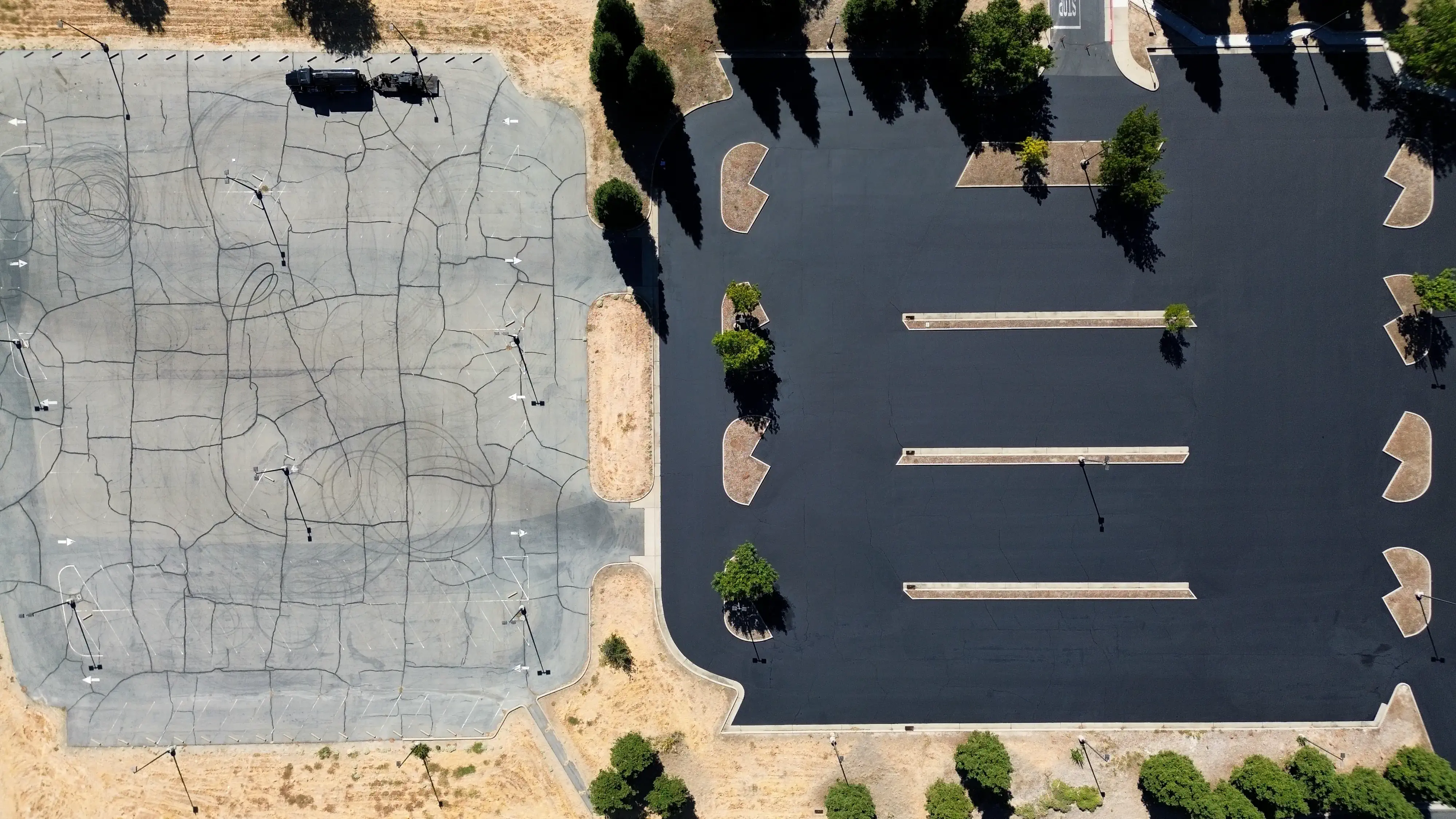Asphalt degrades due to a combination of environmental factors and physical wear. Here are the main reasons:
UV Radiation
Sunlight breaks down the chemical bonds in asphalt, leading to oxidation. This process causes the material to become brittle and lose flexibility.
Moisture
Water infiltration can weaken the asphalt structure. Freeze-thaw cycles can exacerbate this, causing cracks and potholes.
Temperature Changes
Extreme heat can soften asphalt, while cold can make it hard and brittle. These temperature fluctuations can lead to cracking and surface degradation.
Traffic Load
Repeated stress from vehicles can create ruts, cracks, and surface wear, especially if the asphalt was not properly installed or is of low quality.
Chemical Exposure
Oils, fuels, and other chemicals can seep into asphalt, causing it to deteriorate more rapidly.
Vegetation
Roots from nearby trees can grow underneath asphalt, creating cracks and upheaval.
Understanding these factors is crucial for maintaining and prolonging the lifespan of asphalt surfaces. Regular maintenance, such as sealcoating and timely repairs, can significantly reduce degradation.
